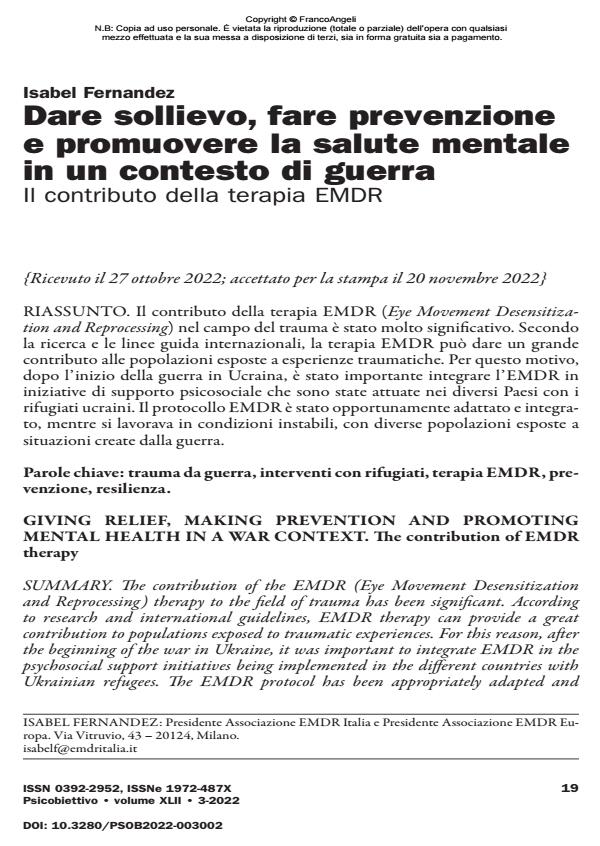Dare sollievo, fare prevenzione e promuovere la salute mentale in un contesto di guerra
Titolo Rivista PSICOBIETTIVO
Autori/Curatori Isabel Fernandez
Anno di pubblicazione 2022 Fascicolo 2022/3
Lingua Italiano Numero pagine 12 P. 19-30 Dimensione file 653 KB
DOI 10.3280/PSOB2022-003002
Il DOI è il codice a barre della proprietà intellettuale: per saperne di più
clicca qui
Qui sotto puoi vedere in anteprima la prima pagina di questo articolo.
Se questo articolo ti interessa, lo puoi acquistare (e scaricare in formato pdf) seguendo le facili indicazioni per acquistare il download credit. Acquista Download Credits per scaricare questo Articolo in formato PDF

FrancoAngeli è membro della Publishers International Linking Association, Inc (PILA)associazione indipendente e non profit per facilitare (attraverso i servizi tecnologici implementati da CrossRef.org) l’accesso degli studiosi ai contenuti digitali nelle pubblicazioni professionali e scientifiche
Il contributo della terapia EMDR (Eye Movement Desensitiza- tion and Reprocessing) nel campo del trauma è stato molto significativo. Secondo la ricerca e le linee guida internazionali, la terapia EMDR può dare un grande contributo alle popolazioni esposte a esperienze traumatiche. Per questo motivo, dopo l’inizio della guerra in Ucraina, è stato importante integrare l’EMDR in iniziative di supporto psicosociale che sono state attuate nei diversi Paesi con i rifugiati ucraini. Il protocollo EMDR è stato opportunamente adattato e integra- to, mentre si lavorava in condizioni instabili, con diverse popolazioni esposte a situazioni create dalla guerra.
Parole chiave:trauma da guerra, interventi con rifugiati, terapia EMDR, pre- venzione, resilienza.
Isabel Fernandez, Dare sollievo, fare prevenzione e promuovere la salute mentale in un contesto di guerra in "PSICOBIETTIVO" 3/2022, pp 19-30, DOI: 10.3280/PSOB2022-003002